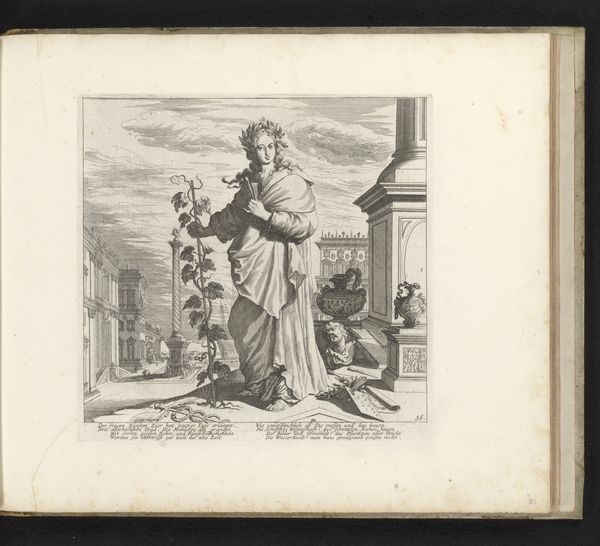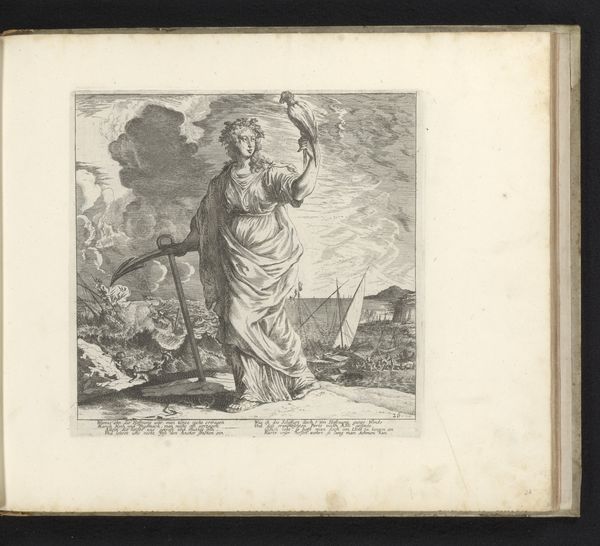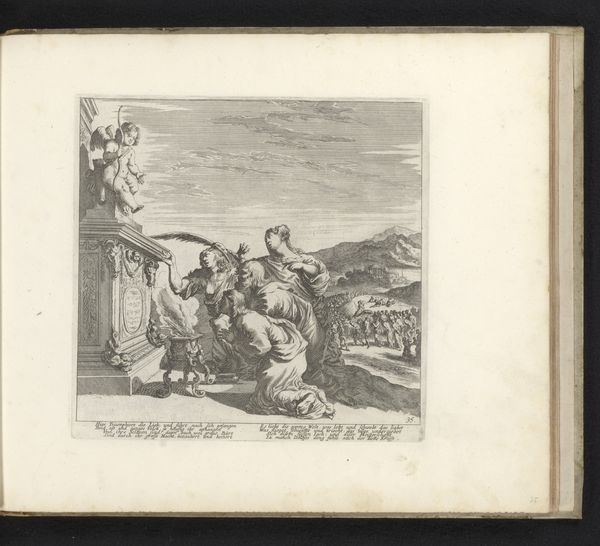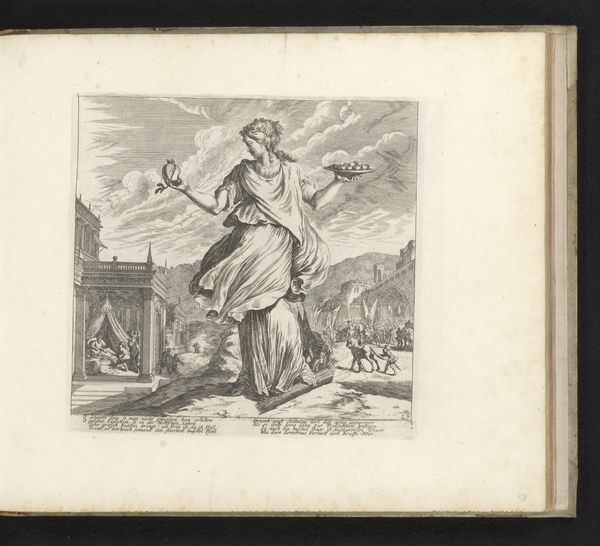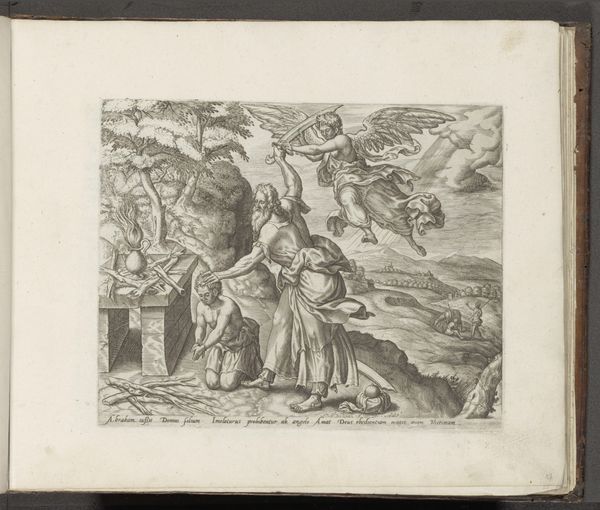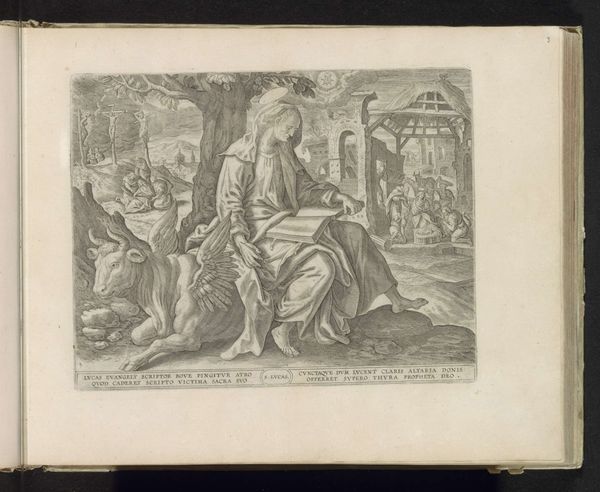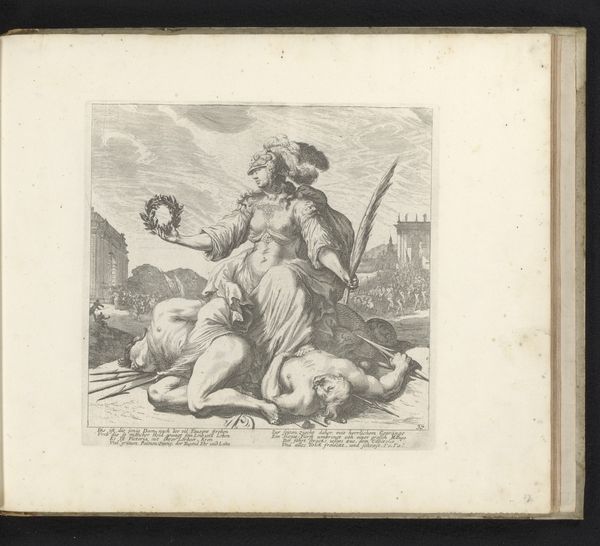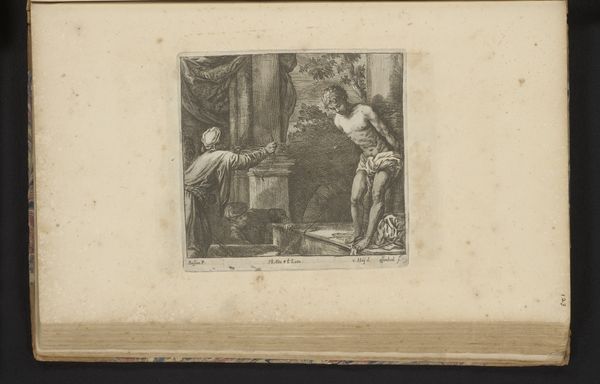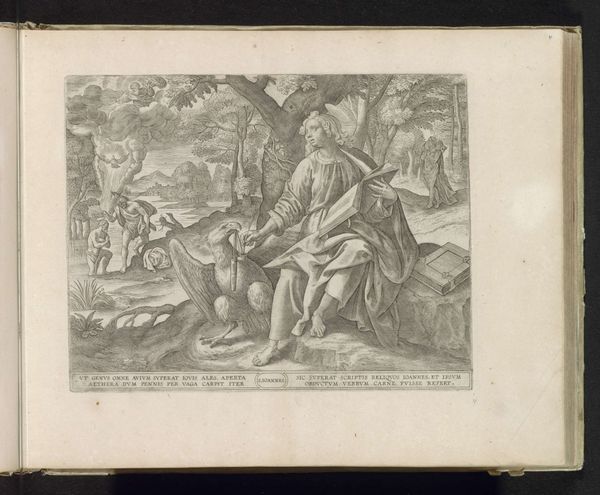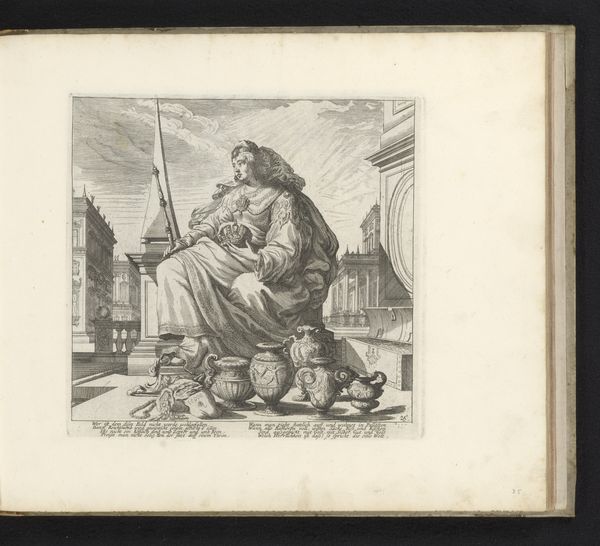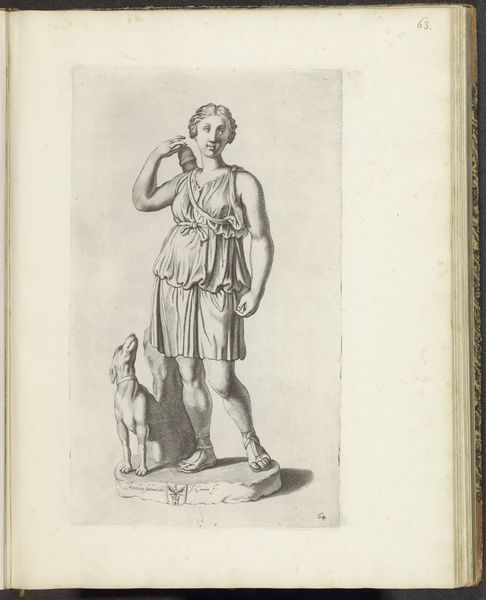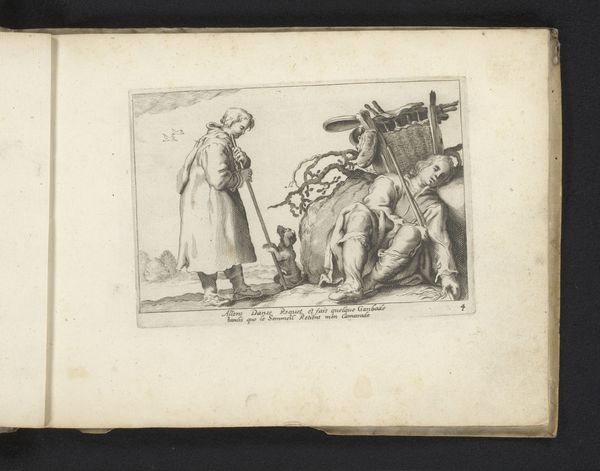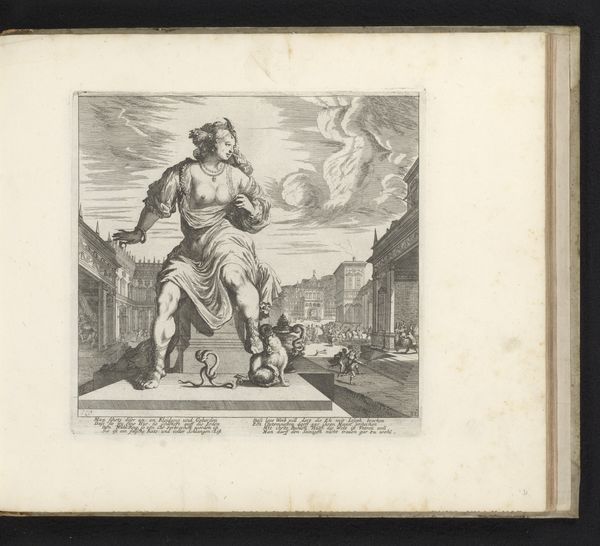
print, engraving
#
portrait
#
allegory
#
baroque
# print
#
figuration
#
line
#
history-painting
#
engraving
Dimensions: height 218 mm, width 226 mm
Copyright: Rijks Museum: Open Domain
Editor: So, here we have Melchior Küsel's "Personificatie van Trouw" - "Personification of Fidelity" - an engraving from between 1670 and 1682. There's a central female figure who dominates the composition and it has a strange mix of public and private elements in the architectural elements of the background... What's your interpretation of it? Curator: The choice to represent fidelity as a female figure in 17th-century Europe directly reflects social and political structures where women were often idealized as embodiments of virtues like faithfulness and obedience. This imagery reinforced expectations of female behavior, especially within marriage and the family. Consider the background; how do these architectures speak to the tension of private expectation and public virtues? Editor: I see what you mean. The grand architecture almost creates a stage for this virtue, putting fidelity on display. But there’s that little dog by her side too. What does that imply? Curator: The dog is a traditional symbol of loyalty. Including it underscores that faithfulness should be unwavering and constant. But consider the audience for this print. Was it meant for personal contemplation or public dissemination? Who was meant to be impressed by this personification? Editor: Given its allegorical nature, it might have been used didactically or perhaps as a diplomatic gift? I hadn’t thought about that! Curator: Exactly! These prints often circulated amongst elite circles, subtly reinforcing societal norms and even projecting political messages related to alliances and trustworthiness. Analyzing its social context reveals the power dynamics embedded in representing fidelity in this specific way. Editor: So it’s not just about an abstract idea, but a very concrete statement within a certain historical and social setting! This makes me look at the artwork with entirely different eyes. Curator: Precisely! Looking at art as a social product allows for understanding its broader impact beyond aesthetics.
Comments
No comments
Be the first to comment and join the conversation on the ultimate creative platform.
